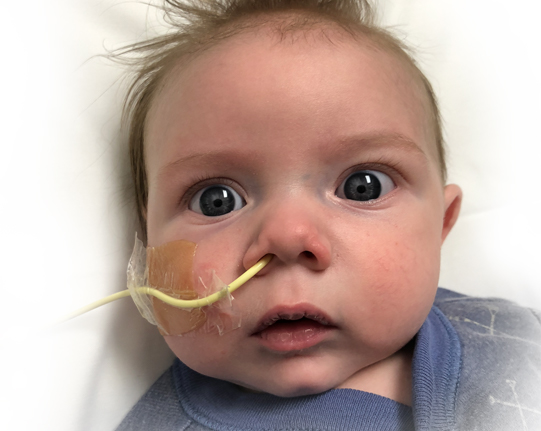Using 3D technology to improve care at BC Children’s Hospital

The practice of using 3D technology to improve care isn’t entirely new to BC Children’s Hospital. Before the program, BC Children’s would partner with hospitals like SickKids in Toronto to commission 3D printed models for its patients. Carter Dieno is one of them.
When she was almost nine months pregnant, Ashley Dieno learned at a routine ultrasound that there was something wrong with her son’s heart. Shortly after, he was diagnosed with double outlet right ventricle—a rare congenital heart disease where the heart’s two major arteries both connect to the right ventricle.
“I was absolutely terrified,” Ashley said. “We had already went through a heart surgery with our first born. It was scary to know our second child would have to do the same thing.”
Ashley gave birth to Carter in December of 2017. Minutes after, the cardiology team at BC Children’s took him away for testing. They decided that surgery wasn’t needed immediately—but he would need to be closely monitored. The Dienos were able to return to their home in Penticton on Christmas day.
Over the next week, however, Carter was having trouble breathing. The family was flown back to BC Children’s Hospital. Carter had several tests and scans and was given a feeding tube to help him gain weight. A few months later, he had a stent procedure. Because of the complexity of his condition, doctors decided to commission a 3D model of his heart. A few weeks later, Ashley was able to see an exact replica of her son’s heart.
“It was really cool to see what it actually looked like. The doctors told us about his condition, but you really can’t understand it until you’re literally holding it in your hands.”
–Ashley Dieno, Carter’s mom
The cardiology team at BC Children’s was also able to use the model to assess different treatment options. With the model, they evaluated three possible scenarios for Carter’s heart treatments and he recently underwent his first surgery. Now Carter is at home with his family and being followed up with appointments every three months—which the family is able to do in their home community thanks to the Heart Centre’s outreach clinics.
